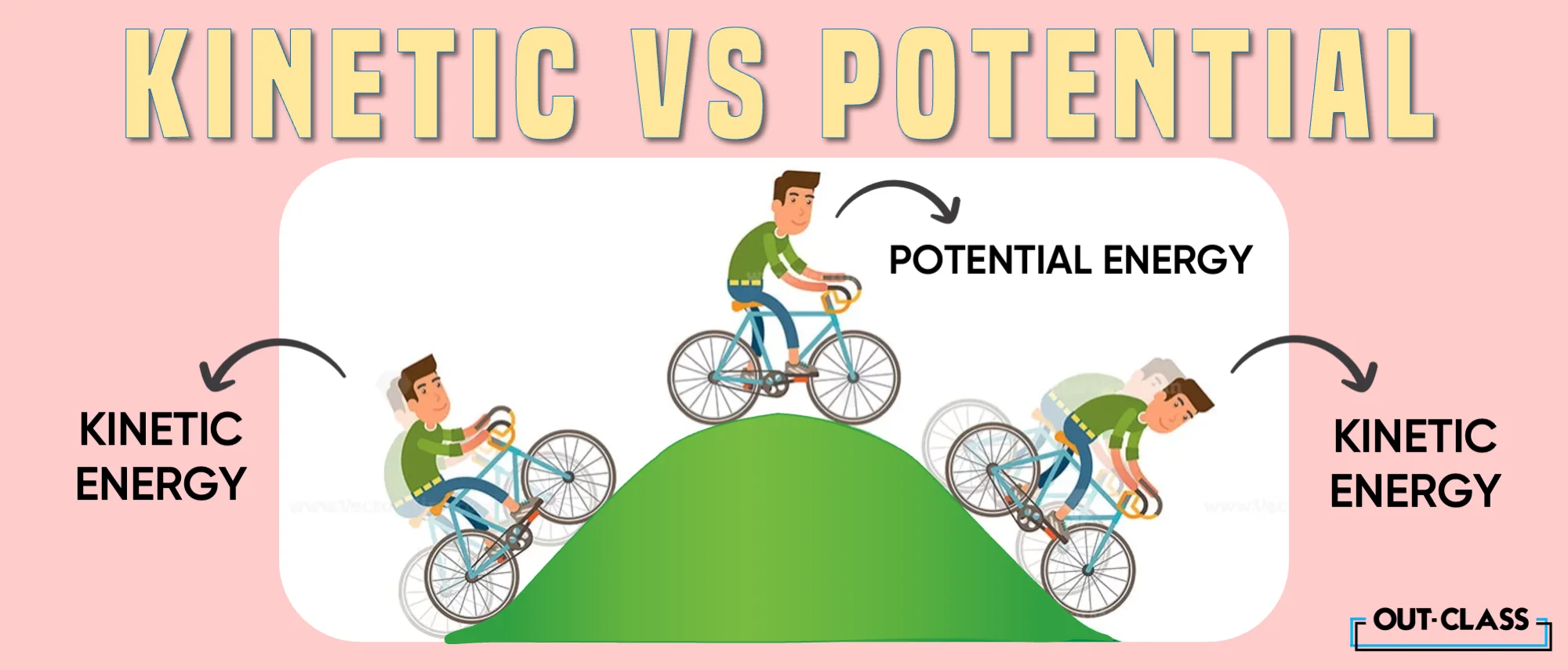Have you ever found yourself pondering, “Can someone please explain the difference between potential and kinetic energy?”. It's a question that often pops up in the minds of IGCSE and O Level Physics students, and it's no wonder why. We're surrounded by energy in various forms, from fossil fuels in our cars to solar panels. Understanding the nuances between potential and kinetic energy can unravel a whole new layer of insight into the world around us.
Let's start by breaking it down. When we talk about energy, it's not just limited to fuel or electricity. Think of energy as the currency of the universe - it comes in different denominations, each with its unique spending power.
In this blog, we will discuss:
Understanding Energy
What is Energy?
Energy is the ability to do work. It can neither be created nor destroyed but transferred or altered from one form to another. In today’s world, energy is used for several tasks such as walking, cycling, moving cars along the road, cooking, making products, and even sending astronauts into space.
Forms of Energy:
Forms of energy include:
- heat
- light
- motion
- electrical
- chemical
- gravitational
These forms can be further classified into two broad categories; potential or stored energy and kinetic or working energy.
How are Potential and Kinetic Energy Different?
The ability of a body mass to exert any force, whether in the form of pull or push, against the natural laws of gravity, ultimately, determines the type of energy utilized. An object at rest is said to possess potential energy, whereas an object in motion possesses kinetic energy.
Kinetic Energy
The word ‘kinetic’ is derived from ‘Kinesis’, from the Greek Language, which means ‘to move’. It was first used by Sir William Thomson, better known as Lord Kelvin, a well-known British mathematician, physicist and engineer accredited with inventing the international system of absolute temperature that bears his name.
As described above, a moving object possesses kinetic energy. In specific terms, kinetic energy is the work done to speed up or accelerate an object to move up to a certain velocity. In other words, it is the energy an object has due to particle motion.
The kinetic energy of an object is relative to other stationary or moving objects present in its surrounding environment. An example is the relationship between the object's height and its kinetic energy; the higher the object is from the ground, the higher its kinetic energy is.
In addition, since kinetic energy comes from an object in motion, it will inevitably be zero when the object is at rest. At that point, it possesses potential energy.
Potential Energy
The term ‘potential energy’ was coined by William John Macquom Rankine, a Scottish mechanical engineer who significantly contributed towards the fields of Civil Engineering, Physics and Mathematics and developed a complete theory of the steam engine and all other heat engines. As mentioned above, potential energy is a form of stored energy - specifically, the energy found in every object due to its position concerning other objects.
The potential energy level found in an object depends upon an object's mass, its height relative to any other object in its surroundings and the strength of the gravitational field.
What is the Relationship Between Kinetic and Potential Energy?
Now that you are aware of the definitions of both potential and kinetic energy, it is time to look at the existing relationship between the two.
The primary relationship between potential energy and kinetic energy is that they both can transform or change into one another, i.e. potential energy continuously transforms into kinetic energy and vice versa. Some examples are observed in the case of falling objects or pendulums, where gravitational potential energy (an object held at a height) can be converted into kinetic energy (due to its motion) as the object falls. For such calculations, simply equate the formulas as follows and proceed as needed:
Kinetic Energy = Gravitational Potential Energy
To learn more about Kinetic and Potential Physics formulas, click here!
Example of Relationship between Kinetic and Potential Energy:
Let’s say that you are holding a ball over the edge of a balcony to drop to the ground below. As long as the ball is in your hand, it carries potential energy. However, as soon as you let go of it, its potential energy transforms into kinetic energy because the ball is now in motion. As the ball continues to fall, its velocity rises, therefore, causing its kinetic energy to increase as well. When it reaches the ground, however, velocity decreases to zero while its kinetic energy is transformed back into potential energy.
Examples of Potential and Kinetic Energy
There are many types of potential and kinetic energy.
Examples of potential energy include:
- electrical charges
- gravitational energy
Examples of kinetic energy include energy found in:
- a moving bus
- a ball thrown up in the air
- a swing going back and forth
An example of both potential and kinetic energy is a waterfall; the height of the waterfall is the potential energy, and the water movement from the waterfall base to the river or lake below is the kinetic energy.
Conclusion
In conclusion, understanding the distinction between potential and kinetic energy is pivotal for grasping the fundamental workings of the universe.
Embracing this knowledge opens doors to deeper exploration and comprehension, empowering IGCSE and O Level Physics students and enthusiasts alike to unravel the mysteries of energy and motion. For those eager to delve further, explore the online O Level & IGCSE Physics course!
FAQs:
Q. What is the fundamental difference between potential and kinetic energy?
Potential energy is stored energy in an object due to its position, while kinetic energy is the energy an object possesses due to its motion.
Q. What is an example between potential energy and kinetic energy?
Examples of potential energy include electrical charges and gravitational energy. Examples of kinetic energy include a moving bus, a ball thrown up in the air, and a swing going back and forth.
Q. Can you explain the relationship between kinetic and potential energy?
Both kinetic and potential energy can transform into one another. For instance, gravitational potential energy can be converted into kinetic energy as an object falls.
Q. How does kinetic energy relate to the motion of an object?
Kinetic energy is the energy an object has due to its motion. It is relative to other stationary or moving objects in its surrounding environment.
Q. Can you provide an example of the relationship between kinetic and potential energy?
Consider holding a ball over the edge of a balcony. The potential energy it possesses in your hand transforms into kinetic energy as soon as you release it. As the ball falls, its kinetic energy increases, and when it reaches the ground, it transforms back into potential energy.
Q. How is the potential energy level determined in an object?
The potential energy level in an object depends on its mass, its height relative to other objects, and the strength of the gravitational field.



